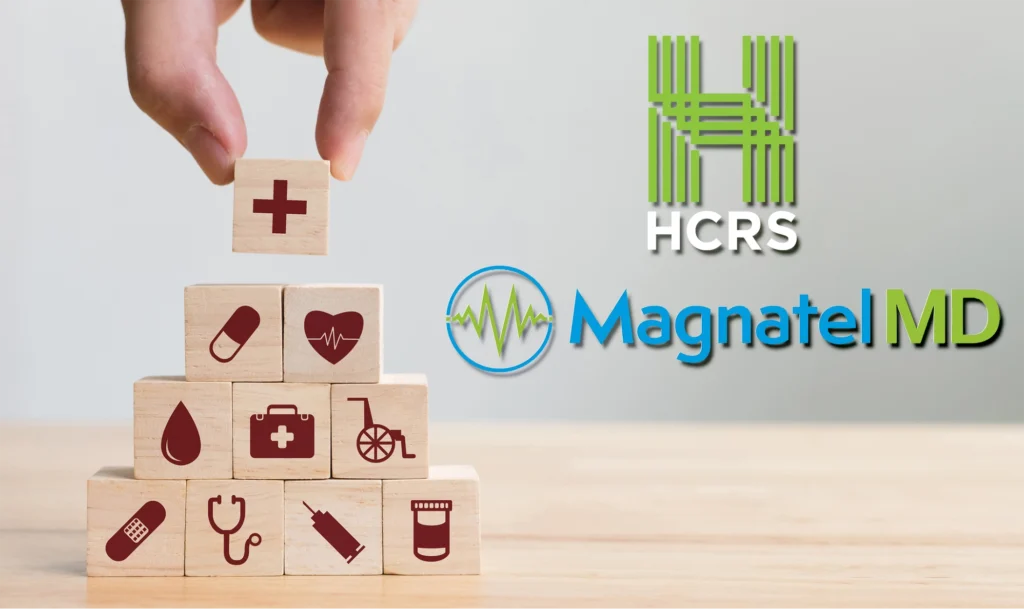Celebrating 20 Years in Business

Remote patient monitoring (RPM) is transforming how providers can care for their patients — especially Medicare beneficiaries — by offering wearable sensors that can continuously track and share patient vitals. HealthCare Resolution Services, Inc. (HCRS) can coordinate the establishment of powerful RPM programs so that providers can standardize care and save revenue.
The following overview and case study examine the benefits of RPM in greater detail, the potential hurdles it can present, and how one of our clients reaped the rewards of this service.
RPM lets healthcare providers monitor patients’ vital signs and other health data in real time without requiring them to visit a clinic or hospital. This is a significant advantage for Medicare patients, many of whom suffer from chronic conditions like diabetes, hypertension, and heart disease. Through constant monitoring, healthcare providers can make timely interventions to prevent worsening symptoms and hospitalizations.
HCRS chose to become involved with RPM vendor coordination because we recognized how it could enhance patient outcomes while simultaneously reducing data management burdens for healthcare systems.
For patients, the benefits are clear:
Better Chronic Disease Management. RPM ensures that patients with chronic illnesses receive continuous monitoring, allowing healthcare teams to respond proactively to any changes in their conditions.
Reduced Hospitalizations and ER Visits. Medicare patients are prone to hospital readmissions. These can be avoided by using RPM for early interventions.
Increased Patient Engagement. RPM encourages patients to be more involved in their own health, from lifestyle choices to treatment plans.
Cost Savings for the Healthcare System. Medicare spends a significant portion of its resources on treating chronic diseases and hospitalizations. RPM can lower these costs by reducing the need for emergency care and hospital stays.
RPM is more than a technological solution — it’s a fundamental shift in how patient health can be tracked and improved.
While RPM offers tremendous potential, it isn’t without some challenges — namely, communication and data management between vendors and providers.
As RPM is still relatively new in healthcare, there can be aspects of a patient’s medical review and care that are not adequately integrated between vendors and providers.
Treatments may change, recorded RPM data may not be compatible with or accessible from a provider’s in-house software, or there may be insufficient staff to review the amount of data that RPM sensors collect — thus delaying care and negating the point of the service.
In some cases, there is confusion about what exactly RPM managers are expected to do, what tasks should be prioritized, and how the data they collect should be utilized by healthcare providers.
Clear documentation between vendors and providers is critical for establishing workflows so that both sides understand and agree upon what data is necessary — as well as have that data readily available and analyzed appropriately. Healthcare providers must be able to trust the recorded vitals from their patients’ sensors so that they can diagnose and treat those patients effectively.
At HCRS, we have access to a pool of RPM vendors that understand these needs. We liaise with them and healthcare providers to establish clear guidelines and expectations so that communication and data are accurate and timely.
As a subcontractor to MagnatelMD, HCRS helped their patients connect with the appropriate doctors and nurses based on their symptoms. Through our national partnership and collaboration, we:
As healthcare continues to evolve, RPM will play an increasingly vital role in delivering high-quality, cost-effective care. HCRS remains committed to this transformation by focusing on three key pillars:
Let HCRS help you improve the health outcomes for your patients who struggle with chronic, complex medical conditions, all while saving revenue and managing the demands of staffing and data administration.
Contact us today to learn more about a customized program.